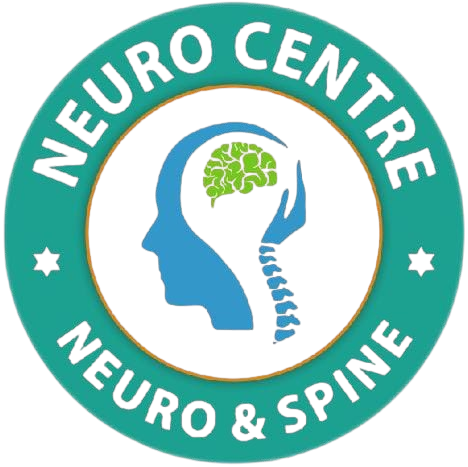How Exercises Help to Treat Vertigo and Dizziness
Vertigo and dizziness are irksome feelings that have the ability to ruin the life of an individual and turn everyday tasks into difficult ones to hurdle. Even though these feelings might be caused by numerous probable underlying illnesses, i.e., vestibular disorder, inner ear disorder, or neurological disorder, exercises have proven highly useful to treat as well as cure certain types of vertigo.
At Neurocentre, with Dr. M.N. Singh, the Top Neurologist in Jharkhand, patients are provided with a holistic and personalized treatment for vertigo and dizziness. Let us see how some exercises can be useful and why it is essential to visit the Best Vertigo Specialist in Jamshedpur.
Understanding Vertigo and Dizziness
Before coming in for the exercises, let us first understand what vertigo and dizziness are:
- Vertigo is an illusory experience of motion or spinning, either of the individual or the environment.
- Dizziness is an all-encompassing term that includes light-headedness, loss of balance, or a floating sensation.
These are manifestations that can be caused by benign paroxysmal positional vertigo (BPPV), vestibular neuritis, Meniere’s disease, migraines, or even neurological disorders. Hence, diagnosis by Top Vertigo Doctors in Jamshedpur, i.e., at Neurocentre, is necessary to receive proper treatment.
How are exercises useful?
Rehabilitation exercises for vestibular function assist in restoring the brain as well as improving muscle coordination, inner ear, and eye coordination. Vestibular exercises improve balance, coordination, and visual focus. If performed by an expert neurologist like Dr. M.N. Singh, they are safe and useful to the majority of patients.
How exercises are useful in the recovery:
1. Adaptation:
Exercises condition the brain to tolerate improper signals from the inner ear. Sustained movement, causing mild dizziness, is exercised, making the brain learn and reduce symptoms over time.
2. Habituation:
Repeating movements in some exercises helps ease dizziness by exposing the body to movements repeatedly. The brain becomes conditioned over time and lessens discomfort.
3. Substitution:
When vestibular structures are damaged, the body can compensate and employ other senses (i.e., vision or proprioception) in an attempt to stabilize. Exercises acclimatize the body to utilizing these standby systems effectively.
Top Exercises Prescribed by Neurocentre
The following exercises are widely prescribed by the Top Vertigo Specialists in Jamshedpur:
- a) Epley Manoeuvre
Best for: Benign Paroxysmal Positional Vertigo (BPPV)
This manoeuvre replaces the loose calcium crystals in the inner ear back to their proper location, eliminating vertigo quite effectively.
Steps (to be performed with instruction at first):
- Sit on a bed.
- Rotate head 45° to the affected side.
- Lie back rapidly with head over the bed’s edge.
- Retain for 30 seconds to 1 minute or until fainting.
- Roll onto the other side with the head in the same position.
- Slowly sit up.
- b) Brandt-Daroff Exercises
Best used for: Residual vertigo or motion sickness
These exercises habituate the brain to disorienting movement.
Steps:
- Sit on a bed in an upright position.
- Roll quickly over onto a 45° side-lying with the nose up.
- Relax for 30 seconds or until the dizziness resolves.
- Sit up.
- Do the other side.
- c) Gaze Stabilization Exercises
Best used for: Enhanced visual focusing and minimizing dizziness when the head moves
This involves watching a stationary object while moving your head side to side or up and down. This serves to coordinate visual information and head movement in the brain.
- d) Balance Training
Best for: Increased stability and reduction of risk of falls
Includes standing on one leg, walking in a straight line, or balancing boards under supervision. These enhance proprioception and coordination.
Why Neurocentre?
Neurocentre patients receive speciality diagnosis and evidence-based treatment for neurological disease and vertigo. Seasoned Vertigo Specialist Dr. M.N. Singh employs a multi-mode protocol with medication, lifestyle adjustment, and individualized exercise programs. His long years of practice as one of Jharkhand’s leading neurologists ensure accurate diagnosis and permanent relief.
Most patients with chronic dizziness and loss of balance have regained their balance and confidence by attending rehabilitation classes at Neurocentre. Right from the initial consultation to follow-up therapy, the entire process is carried out with compassion and precision.
When to Visit a Vertigo Expert?
Although dizziness that is transient would clear on its own, recurrent or recurring vertigo must never be taken lightly. If you have any of the symptoms listed above, see the Best Vertigo Doctor in Jamshedpur:
- Spinning sensation
- Sudden or unexplained loss of balance
- Repeated loss of balance or frequent falling
- Nausea and dizziness
- Blurring of vision with movement
An early diagnosis and treatment by a neurologist like Dr. M.N. Singh can prevent complications and hasten recovery.
Conclusion
Vertigo and dizziness are serious enough to impact quality of life, yet through a skilled use of specific exercises along with adequate treatment by specialists, the patients manage to regain their balance, physical and emotional. Hope and restoration await through evidence-based therapies at Neurocentre by Dr. M.N. Singh for those in need of relief forever.
In case you need the Best Vertigo Specialist in Jamshedpur or the Best Neurologist in Jharkhand, trust professionals at Neurocentre to guide you along the journey of enhanced balance and well-being.







